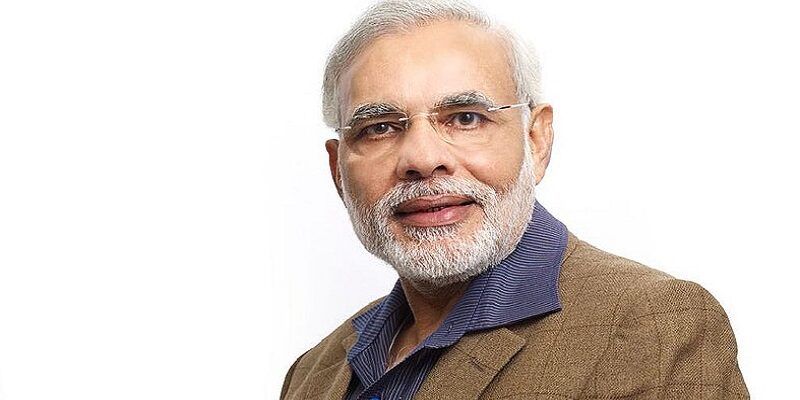The 8th Edition of Indian Mobile Congress (IMC) 2024, the largest telecom, media and technology forum in Asia, jointly organized by the Department of Telecommunications (DoT) and the Cellular Operators Association of India (COAI), kicked-off today with inauguration by Prime Minister Narendra Modi at Bharat Mandapam. Hon’ble Prime Minister took a walkthrough of the exhibition area before officially inaugurating the event and where he listed four pillars of Digital India – Low-priced devices, extensive reach of digital connectivity to every nook and corner of the country, easily accessible data and goal of ‘Digital First’.
Further demonstrating this year’s theme of “The Future is Now”, the first day of IMC and WTSA 2024 saw global leaders, visionaries, innovators and exhibitors showcased innovative technologies, ideas and use cases across key industries and sectors. India Mobile Congress 2024 is currently taking place from 15th -18th October, 2024 at Pragati Maidan in New Delhi.
The inaugural day witnessed showcases, keynotes and session discussions by industry leaders on telecom and digital infrastructure, quantum technology and circular economy, along with a spotlight on 6G and 5G use-case, cloud & edge computing, IoT, semiconductors, cybersecurity, green tech, satcom and electronics manufacturing.
The day also featured important sessions and panels which included: Shaping the Future of Telecom: AI, 5G, and the Power of Multi-layer Convergence, Xciting Networks, Unleashing Potential, Orchestrating Future Connectivity with Open APIs, The Future Engineered: Women Driving the Digital Paradigm, Gadgets that shape the future: Insights and innovations, among others.
Commenting on the Honorable Prime Minister Speech Lt. Gen. Dr. S.P. Kochhar, Director General, COAI, “India’s telecom story is unfolding into a new phase. With the IMC 2024 and WTSA 2024 inauguration today, the deliberations for the next few days will play an important role in India’s growing global leadership in the industry. We are truly inspired by the Hon’ble Prime Minister’s inaugural speech, wherein he highlighted the focus on Digital India, technology leadership and aligned opportunities for women, among others. The industry is committed to following his vision of India playing a pragmatic role in the technology and telecom landscape, while fostering a framework of rules and regulations for the sector.”
Quotes from key industry leaders on Day 1 of India Mobile Congress 2024:
Mats Granryd, Director General of the GSMA said, “India is doing absolutely phenomenon and the rollout of 5G is literally unmatched with India leading in 5G downloads. Regarding AI, We need to respect the complexity of AI. We see bright future in AI, but we need to respect the complex nature of AI, we need to follow the ethics etc. Spectrum is lifeline and blood of operators, aligning on spectrum is crucial to achieve our connectivity targets. We need to help the government to have a roadmap and timeline to align 6 GHz, if they missed it and leave no one behind.”
Lt. Gen. Dr. S.P. Kochhar, DG, COAI said, “As we navigate the complexities of 5G, cybersecurity is no longer an overlay but an integral part of our digital fabric. With machines, sensors, and cross-border networks blurring boundaries, securing telecom networks is crucial for national security and economic stability. Policy, regulation, and technology must converge to address this challenge. The evolving threat landscape demands innovative solutions, from deep packet inspection to enterprise security operation centers. The imperative for sustainable cybersecurity measures has never been more pressing.”
Andres Vicente, Head of MA Southeast Asia, Oceania and India, Ericsson said, “India is leading the 5G revolution, deploying half a billion base stations in just 22 months, covering 90% of the population. 5G will not only connect people but everything—from vehicles and wearables to critical industries—becoming the backbone of our society with 10 times the capacity of 4G and 30% less energy consumption.”
Udayan Mukherjee, Intel Senior Fellow & Chief Architect, Network and Communications Products said, “At Intel, we’re seeing a massive evolution in AI’s role within telecommunications. AI’s potential to enhance traditional processes like MIMO and link adaptation is transformative, especially as we push into 6G research, where AI-native and cloud-native RAN concepts are becoming a reality. Our advancements in silicon, including the AMX matrix acceleration on Gen 6 SOCs, are built to handle complex AI workloads at the network edge, ensuring future-proof solutions. We also recognize the Indian government’s proactive contribution, with its support for 6G research and AI-driven telecom innovation. This collaboration enables smarter, more efficient networks capable of predictive maintenance and real-time problem-solving-key for the next generation of telecom.”
Alex Rogers, President, Qualcomm Technology Licensing (QTL) & Global Affairs, Qualcomm said, “5G has driven India’s tremendous growth in data consumption, making it the second-largest smartphone market and a significant manufacturing base. As AI advances, we’re facing a massive power demand in data centers, projected to consume 50% of their capacity by 2035. The solution lies in shifting AI workloads to edge devices, such as smartphones, PCs, and vehicles, which can handle significant AI tasks independently. Edge AI offers real opportunities for power-efficient computing, enabling us to achieve sustainability and reduce infrastructure burdens.”
Vito Di Maria, Vice President, APAC Optical Networks Business Centre, Network Infrastructure Business Group, Nokia said, “We’ve been hearing about India’s journey towards a digitally connected nation. This digitalization is leading to massive data generation. However, geographical challenges, such as laying cables in certain regions, pose obstacles. India is playing a central role in overcoming these challenges. Given the young population and high usage of digital applications, India is a prime target for AI investments. The future of data centers involves distributed investments and dynamic traffic patterns. This shift requires a scalable and simplified approach to connectivity.”
Gururaj, MD, Optiemus Electronics Ltd. said, “In line with Honorable PM Modi’s thought, devices should be affordable. I believe it is the job of the manufacturer to bring together all available technology and serve them in devices that are affordable for all. From a device manufacturing perspective – the creation of modular smartphones is revolutionary in the telecom world – and the leading company is testing this right now. All these technologies need a large amount of energy/power, and battery technology needs to evolve at a better pace. Storage of energy is certainly a challenge, but we are working towards curating solutions.”










